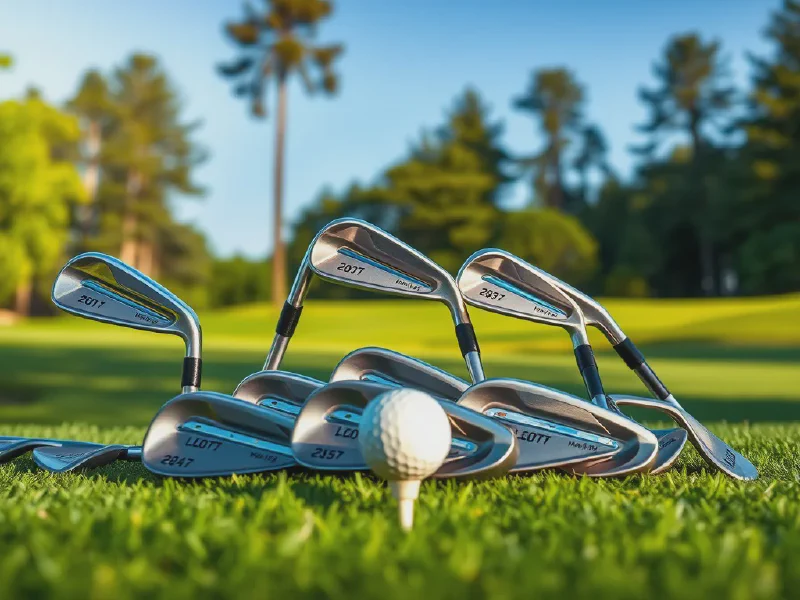Essential Golf Wedge Loft Guide: Choose the Right Wedge

Golf Wedge Loft Guide
The Golf Wedge Loft Guide is an essential resource for golfers looking to improve their short game. Understanding wedge loft can greatly enhance your precision and effectiveness around the greens. With the right knowledge of loft specifications, golfers can make more informed decisions when it comes to selecting and using wedges during their rounds.
In this Golf Wedge Loft Guide, we'll discuss the importance of wedge loft in short game play, the various types of wedges available, and how to choose the right wedge for your specific needs. Whether you're a beginner or an advanced player, understanding loft can drastically change your approach to the game and improve your overall performance.
Wedges are crucial for achieving accuracy in shots that require a high degree of precision. The Golf Wedge Loft Guide will help you navigate the complexities of wedge selection by explaining key concepts such as loft, bounce, and grind. By the end of this guide, you'll have a comprehensive understanding of how these factors contribute to your play and what to consider when purchasing new wedges.
Armed with insights from our Golf Wedge Loft Guide, players can tackle various situations on the course—from flop shots to delicate chips around the green. With wedges tailored to your specifications, you can enhance your short game and shave strokes off your score.
Let's dive deeper into each aspect of wedge loft, starting with the fundamentals and advancing to the specifics of choosing and maintaining your wedges.
Understanding Wedge Lofts
Wedge loft refers to the angle of the clubface relative to the ground. It is a crucial factor in determining how high and far the ball will travel when struck. Generally, the higher the loft, the steeper the angle, which results in a higher trajectory and shorter distance.
Loft plays a significant role in the short game, affecting how the ball behaves upon landing. Higher lofted wedges create more spin, allowing for better stopping power on the greens. Understanding the right loft for your game can significantly improve your ability to execute various types of shots, particularly in tricky situations.
Common loft ranges for wedges include pitching wedges (typically 44-48 degrees), gap wedges (50-54 degrees), sand wedges (54-58 degrees), and lob wedges (58-64 degrees). Knowing these ranges helps players select the right wedge for specific distances and shot types.
Choosing the Right Wedge
When choosing a wedge, several factors come into play, including the loft, bounce, grind, and your personal playing style. A golfer’s skill level, swing type, and course conditions should also influence their selection. It’s crucial to have wedges that complement your technique and strategy on the course.
There are four primary types of wedges: pitching wedges, gap wedges, sand wedges, and lob wedges. Each type serves a unique purpose, enabling golfers to handle diverse situations. Pitching wedges are great for longer approach shots, gap wedges fill the distance gap, sand wedges are designed for bunkers, and lob wedges allow for high, soft shots.
Understanding when to use each type of wedge is essential. Use a pitching wedge for medium-range approach shots, a gap wedge for distances between your pitching and sand wedge, a sand wedge for bunker play, and a lob wedge for delicate chips and flop shots near the green.
Wedge Bounce Explained
Bounce refers to the angle between the leading edge of the clubface and the lowest point of the sole. It’s an important factor that influences how the wedge interacts with the turf or sand during a shot. The correct bounce helps prevent the club from digging too deep into the ground, affecting shot performance.
Bounce impacts shot performance by influencing the club's ability to glide through different surfaces. A higher bounce helps prevent sticking in the sand or soft turf, while lower bounce is better for firm conditions. Understanding how bounce works can help golfers select the right wedges for their course conditions.
Choosing the right bounce type is critical based on the conditions you typically play in. For softer conditions, a higher bounce can create better results, while lower bounce works well in firmer conditions. Playing frequently in variable conditions might require a selection of wedges with different bounces.
Wedge Grinds and Customization
Wedge grinds refer to the shaping of the sole of the wedge. Different grinds cater to varying swing types and turf conditions, allowing golfers to customize their wedges for optimal performance. Some popular grind types include standard, low, and high-bounce grinds.
Custom grinds provide significant benefits as they enable players to optimize their scores based on specific playing conditions and personal preferences. Adjusting the grind can improve versatility and performance for different types of shots, making wedges more effective around the greens.
For beginners, standard grinds are usually sufficient, as they offer ease of use. Advanced players, on the other hand, might benefit from experimenting with custom grinds tailored to their swing style and course conditions, allowing them to maximize performance.
Maintaining Your Wedges
To keep your wedges performing at their best, regular cleaning is essential. Best practices include wiping down the clubface after each shot and cleaning the grooves with a brush. This helps maintain spin and control during play.
Wedges should be replaced when they show significant wear, typically every 1-2 years, depending on usage. Regularly assessing the condition of your wedges can help determine the right time for replacement to ensure optimal performance.
Wear on a wedge can severely impact its performance. Deteriorated grooves can lead to poor spin and reduced shot control. Keeping an eye on your wedges can help maintain their performance and ensure consistency throughout your game.